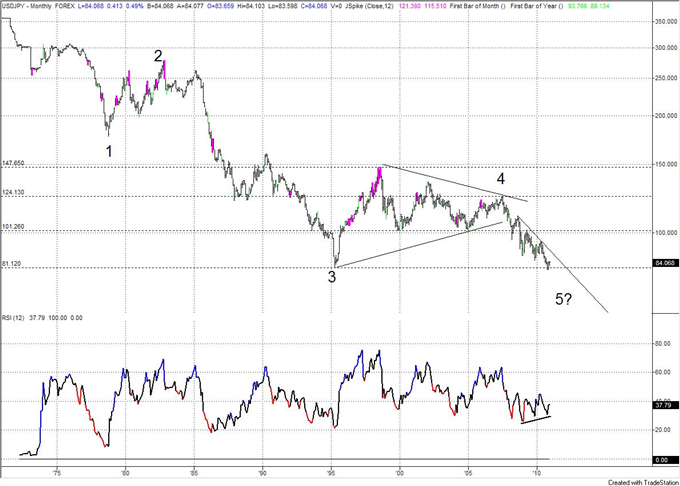Jason Rogers
Senior member
- Messages
- 2,772
- Likes
- 93
Gold To Test Record-High As Investors Seek Alternative To US Dollar
Written by David Song of DailyFX.com

Fundamental Forecast for Gold: Bullish
Gold prices pushed back above $1400/oz in December as market participants diversified away from the U.S. dollar, and the bullion may push higher over the following week as investors look for an alternative to the reserve currency. The precious metal could certainly make another run at the record high of $1424/oz next week as the bearish sentiment underlying the greenback resurfaces, but a shift in market sentiment could lead gold to consolidate as the fundamental outlook for the world economy remains clouded with uncertainties.
According to a report by the Shanghai Gold Exchange, gold imports into China surged by nearly five-folds during the first 10-months of this year as investors attempt to hedge against rising inflation, and demands for the precious metal may accelerate further as world policy makers maintain a cautious outlook for the global recovery. As fears surrounding the European debt crisis continue to weigh on investor confidence, with South Korea pledging to retaliate against the North, instability in the world economy could push gold prices higher as risk sentiment continues to dictate price action in the financial markets. With gold maintaining the upward trend from earlier this year, the technical outlook favors a bullish bias for the precious metal, and prices may climb higher over the near-term as it continues to trade above the 50-Day moving average at $1356. However, the bearish divergence in the relative strength index could spark a short-term correction in the previous metal, and gold prices may consolidate in the days ahead as it approaches the record-high.
With the slew of central bank interest rate decisions scheduled for the following week, dovish comments from global policy makers could fuel increased demands for the bullion and lead prices to climb back to $1424/oz as the U.S. dollar’s safe-haven status comes under pressure. In turn, we should see gold maintain its upward trend throughout the remainder of the year, but a shift in market sentiment could spark increased volatility in gold prices as world leaders take unprecedented steps to restore investor confidence.
Written by David Song of DailyFX.com

Fundamental Forecast for Gold: Bullish
Gold prices pushed back above $1400/oz in December as market participants diversified away from the U.S. dollar, and the bullion may push higher over the following week as investors look for an alternative to the reserve currency. The precious metal could certainly make another run at the record high of $1424/oz next week as the bearish sentiment underlying the greenback resurfaces, but a shift in market sentiment could lead gold to consolidate as the fundamental outlook for the world economy remains clouded with uncertainties.
According to a report by the Shanghai Gold Exchange, gold imports into China surged by nearly five-folds during the first 10-months of this year as investors attempt to hedge against rising inflation, and demands for the precious metal may accelerate further as world policy makers maintain a cautious outlook for the global recovery. As fears surrounding the European debt crisis continue to weigh on investor confidence, with South Korea pledging to retaliate against the North, instability in the world economy could push gold prices higher as risk sentiment continues to dictate price action in the financial markets. With gold maintaining the upward trend from earlier this year, the technical outlook favors a bullish bias for the precious metal, and prices may climb higher over the near-term as it continues to trade above the 50-Day moving average at $1356. However, the bearish divergence in the relative strength index could spark a short-term correction in the previous metal, and gold prices may consolidate in the days ahead as it approaches the record-high.
With the slew of central bank interest rate decisions scheduled for the following week, dovish comments from global policy makers could fuel increased demands for the bullion and lead prices to climb back to $1424/oz as the U.S. dollar’s safe-haven status comes under pressure. In turn, we should see gold maintain its upward trend throughout the remainder of the year, but a shift in market sentiment could spark increased volatility in gold prices as world leaders take unprecedented steps to restore investor confidence.























